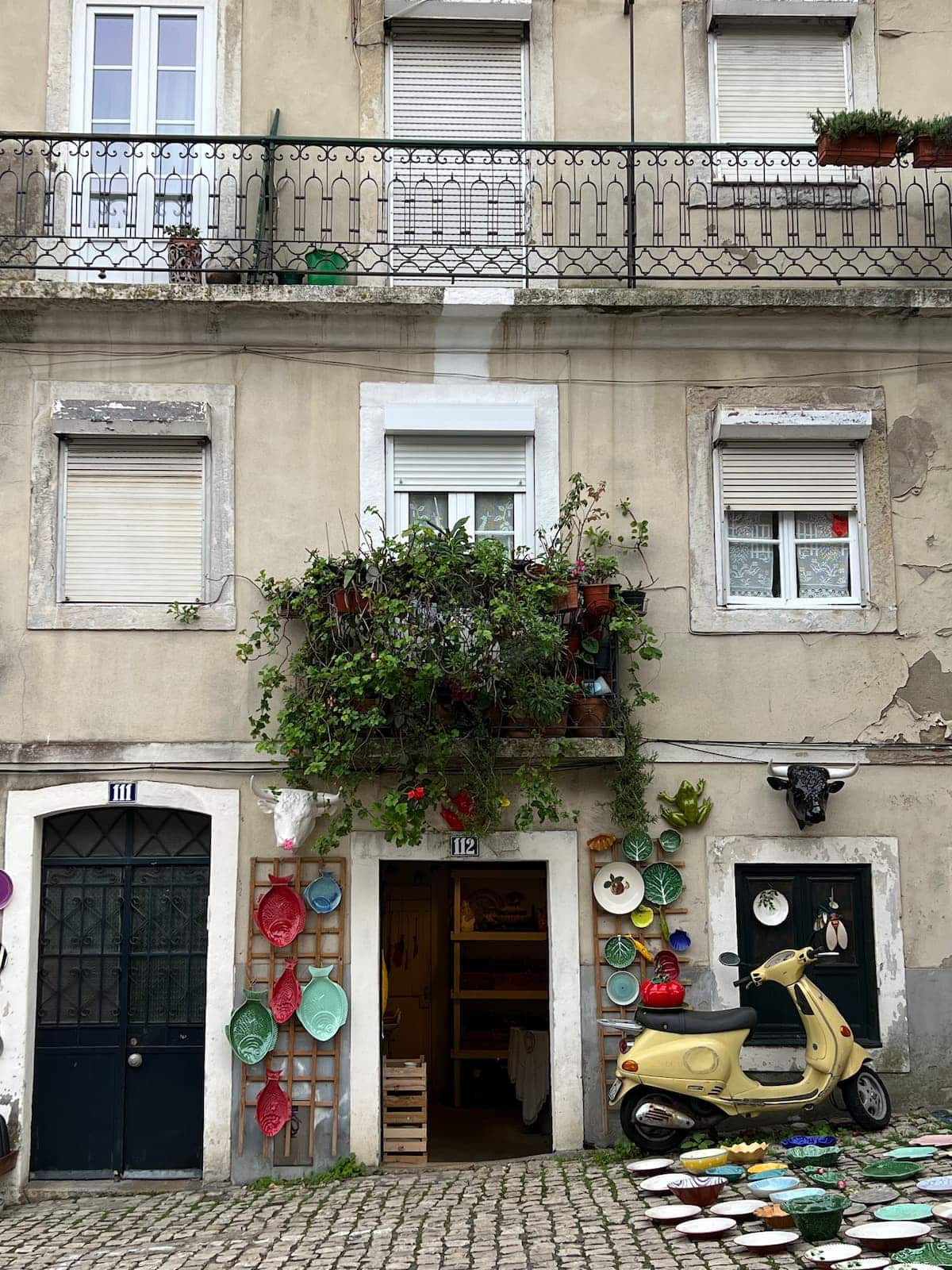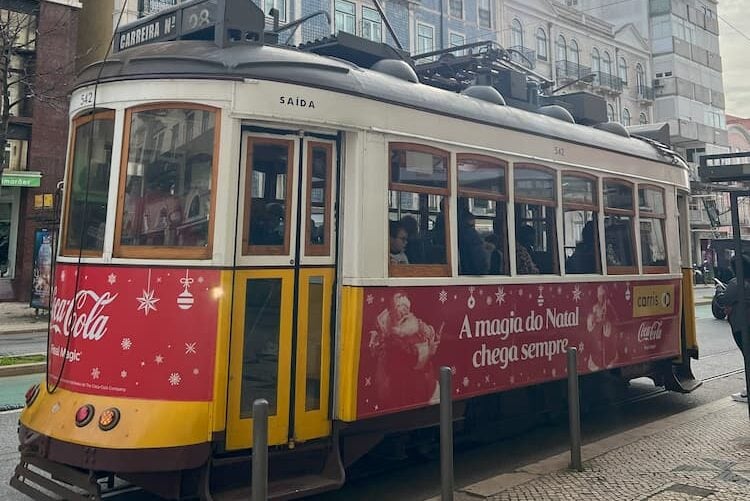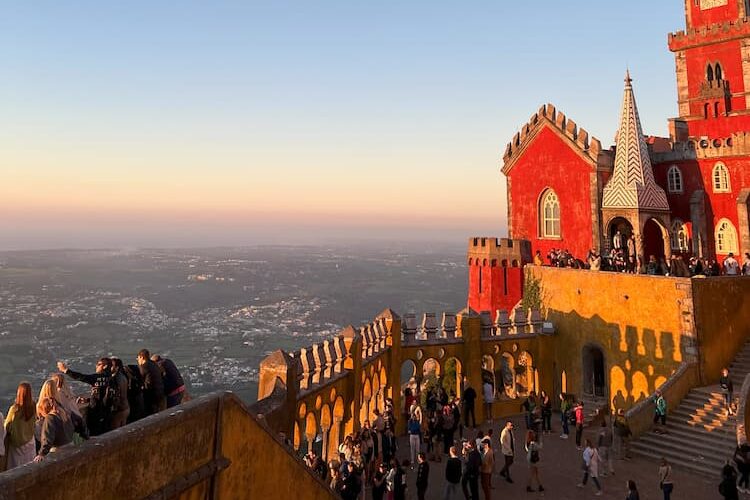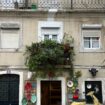
Go World Travel is reader-supported and may earn a commission from purchases made through links in this piece.
With its signature cobblestone alleyways, yellow trams crisscrossing the streets, a buzzing nightlife, various historic and artistic attractions, friendly locals, a welcoming weather and delicious cuisine, Lisbon is a must-see city in Europe. In fact, in a recent survey, Lisbon was declared as the best-value location for a city break in Europe.
It’s no surprise that hoards of foreigners are flocking to the capital city of Portugal with the country rolling out new visa schemes such as the digital nomad visa. Portugal has also been declared one of the safest countries in Europe especially for solo female travellers.
If you’re planning to move to the vibrant Portuguese capital and want to know everything you need to know (that you won’t find on Google), this guide is for you.
Planning a last-minute trip to Portugal?
Top Experiences and Tours in Portugal:
- See the sights with a tour of Madeira: Skywalk, Porto Moniz Volcanic Pools, and Fanal Tour
- See Lisbon on the Lisbon: Pena Palace, Sintra, Cabo da Roca, & Cascais Daytrip
- Explore more with this tour of Fátima, Nazaré, and Óbidos Small-Group Day Trip from Lisbon
Where to stay in Portugal:
- Find accommodation with Booking.com
- Get a rail pass through Rail Europe
- Find Bus, Train, and Flight tickets with one search through Omio
Arriving in Lisbon
From the airport, you can board a taxi to reach your destination. But mind you, the taxi drivers usually charge a standard rate of €20 which is a lot if you ask me. Bolt and Uber are comparatively cheaper options. An even better option is taking the red line (Sao Sebastiao) directly from the airport which connects to various stations in the city.

Getting around the city
The transport system in Lisbon is well-connected to all areas except some places such as Amadora or Campolide where the metro doesn’t operate. Also, remember that buses are not always on time and the metro operates every seven minutes which is slower than in some other European cities.
Lisbon is also known for its yellow trams which are more for tourists than regular commuters. Trams can be very crowded and pickpocketing in trams is a very common occurrence. I personally did not find the tram experience very enjoyable, however, you can experience it yourself to form your own opinion. Tram 28 is one of the most popular ones in Lisbon.
As far as the transport passes are concerned, you have two options: the Viva Viagem and Navegante. Viva Viagem is suitable for occasional public transport users. You can purchase the card once and reload it depending on the number of journeys you take.
Navegante is a personalized card for frequent public transport users, in other words, for those planning to stay in the city for a longer period. The monthly cost of Navengante is €30 if you want to travel within a limited area of Lisbon, otherwise €40/month. A one-way ticket for occasional journeys costs €1.65. You can learn more about public transport fares here.
Finding a Place to Live
This is the most stressful part of moving to any city: where do you live? Just like other big European cities, finding accommodation in Lisbon can be pretty challenging.
Portugal’s rental market has been undergoing a sharp rise in rental prices given factors such as immigration and a high demand for housing. Portugal’s national housing costs were 61 percent higher as of November 2022 than they were at their previous nominal peak in 2010.
If you’re going to live in Lisbon as a student or professional, the following marketplaces provide decent accommodation options:
You can also try Facebook marketplaces but be very vigilant as scams are very common there. If you’ll not be moving in as a student, you can try getting in touch with real estate agents.
Whatever you do, make sure to book well in advance as accommodations get booked within seconds.
Free Walking Tours
Here’s my cheat code: The best way to get to know a city you just landed in is to book a free walking tour! Every city has them, including Lisbon. Guided walking tours are a great way to not only familiarise yourself with the new city but also get free tips from a local aka your guide.
The good news is most of these tours are free. You have the option to pay the guide anything you want (if you wish to) by the end of the tour. Here are some free walking tours in Lisbon you can take advantage of:
If you’re a student, you can sign up for a membership of Erasmus Life Lisboa. They do group city trips, events, and much more for students at very reasonable rates.

What Weather to Expect
Lisbon is mostly sunny. The annual temperature averages 17 degree Celsius (63 degrees Fahrenheit), August being the hottest month of the year. Winters are relatively warm with an average daily high of 14.3 degrees Celsius.
Rainfall is not a common occurrence, however, in 2022 when I was there, there were heavy rains during the autumn and winter months which is not typical of the city. However, compared to a lot of other European cities, it can be safely said that Lisbon is mostly hot with cool Atlantic breezes.
What about the Language?
The local language is Portuguese. However, many locals (in supermarkets, shops, and even on the streets) speak and understand English which is one of the best things I like about Lisbon when contrasted to other European cities like Barcelona and Paris.
That said, it’s always a good idea to learn the local language of the place you live in, in this case, Portuguese. Portuguese is not that difficult, I assure you and a few lessons on Duolingo can help you get a long way.
Best Places to See
My favourite part about Lisbon was the cute coffee shops which you’ll find almost everywhere. Coffee in Lisbon is not very expensive, compared to, say, Paris. An espresso in cheap places costs as little as €0.70 and a cappuccino usually not more than €2.50.
But if you’re not a coffee person, don’t fret. Lisbon is host to museums, beautiful viewpoints, musical concerts, stunning beaches and so much more that you can enjoy.
If you fancy a day trip, go to Belem where you’ll find attractions such as Torre de Belem, Jeronimos Monastery, museums, and Pasteis de Belem, the famous spot for Pastel de Nata (traditional Portuguese custard tart) which tastes heavenly when topped with powdered sugar and cinnamon. You can also take advantage of riverside walks and peaceful evenings in Belem’s gardens.
Also, don’t miss a day trip to Sintra, the magical town of Palacio Nacional de Pena, known as one of finest palaces in Europe, and a 10th century Moorish castle. You can easily visit Sintra by train which takes around 45 minutes. To make the most of your experience and avoid crowds, start your trip early in the day.

If you’re a beach person, definitely go to Costa da Caparica and Praia do Guincho in Cascais. There is also a cliff called Cabo da Roca that stands at the west point of mainland Europe offering stunning views at sunset.
While I was in Cascais, I also happened to visit a cliff formation, Boca do Inferno (aka Mouth of Hell) without any plan, and trust me, it was it was so worth it what with the enchanting view of the waves crashing against the cliffs and the sun dipping below the horizon.
Must-Try Food
Lisbon is home to some of the most delicious cuisines you’ll ever taste. But undoubtedly, Pastel de Nata steals the show. You’ll find pastel de natas everywhere, from metro stations to fine dining restaurants. However, the best is found in Pastéis de Belém, Fábrica da Nata, and Manteigaria.
The ones in Belém, known as Pastel de Belém, were invented in the 18th century, originally in the Jeronimos Monastery located in Belém. It is said that only seven people in the world know the original recipe for this custard tart.
Apart from pastel de nata, Portugal is also known for its seafood, codfish (Bacalhau being the famous codfish dish) Ironically, they import 70% of their codfish from Norway. Some other traditional Portuguese food to try includes Bifana (pork sandwiches), Caldo Verde (cabbage soup), grilled sardines, and Piri Piri Chicken.
Pro tip: Instead of fine dining restaurants which can be very pricey, try hole-in-the-wall kind restaurants that you’ll not find in Google searches. They usually have better food at cheaper prices. I tried caldo verde and tuna at this place called O Sophia and it was one of the best food my taste buds had during my whole stay in Lisbon.
Time Out Market has a good variety of traditional and non-traditional cuisine, although the place is usually too full and it can be hard to get a seat.

Budget-Friendly Grocery and Shopping Options
When it comes to grocery shopping, Continente, Pingo Doce, Aldi, Lidl, and Minipreco are highlights of the city. Minipreco usually doesn’t have a lot of variety. Pingo Doce has a lot more variety but Continente is the cheapest and it’s my recommended place.
For shopping clothes, shoes, fashion accessories etc, there are several budget-friendly shopping options such as Colombo Shopping Centre (which has Primark), Amoreiras Shopping Centre, and Vasco da Gama. However, my favourite remains Colombo as I found quite a lot of variety there.
Tourist Traps to Avoid
With all the good things said, I should make you aware of the downsides of this city as well. Like any big city, Lisbon is famous for pickpocketing and tourist traps, thanks to its tourist industry that’s growing at a rapid pace.
For example, one overrated place that I know of is Elevator da Santa Justa, a tourist spot for capturing city views. However, a better alternative is Terraços do Carmo instead where you can get free views and avoid long queues.
Another common practice in Portugal is that restaurants serve you bread, butter, and olives in the beginning which you are charged for in the end. Yet another scam is related to taxi fares. For taxi rides to and from the airport, some taxi drivers will charge you not based on the meter reading but a standard rate of €30 or more which is not how it should be.
Be skeptical of using Google as your trip planner. Google will only show you the most touristy places. A better idea is to ask the locals for tips and suggestions- Uber drivers, walking tour guides, or even any locals you randomly bump into.
To make your trip to Lisbon more fruitful, here are some websites that you’ll find helpful:
https://www.visitlisboa.com/en
https://www.visitportugal.com/en
Inspire your next adventure with our articles below:
Author Bio: Sadia Maqsood is a hobbyist and freelance writer who is currently studying and travelling around Europe. She tweets @becomingsadia.
- Travel Guide to Colorado - April 26, 2024
- Travel Guide to Croatia - April 26, 2024
- Top 10 Things to Do in Ireland - April 25, 2024

